Does Your Hair Feel Like Straw After Swimming?
You lift off your swim cap, dry off, and start to wash your hair like usual. But once it dries, it feels off. That soft, smooth texture suddenly feels rough and dry. Almost like straw. If your post-swim hair keeps ending up feeling more like hay than healthy locks, you're not alone. This is a common and frustrating experience for swimmers of all levels.
The good news is it’s not random. Pool water, no matter how clean it looks, plays a big role in zapping the life out of your hair. If your hair has ever felt stripped or crunchy after a dip, that’s your cue to rethink how you treat it before, during, and after your swim. Let’s break down what’s going on and how to start fixing it so your hair can feel like hair again.
Why Hair Feels Like Straw After Swimming
It starts with the pool water. Most pools use chlorine to keep germs at bay, but that disinfecting chemical doesn’t stop at bacteria. Chlorine can also mess with your natural oils, the same oils that help your scalp and strands stay soft and hydrated. When chlorine washes those away, your hair loses a big piece of its healthy barrier.
Even saltwater, which some people see as less harsh, can dry things out. It pulls moisture from your hair in much the same way. And if you swim often, the damage builds up slowly without always being obvious right away. You may notice your hair becoming more coarse, dull, or tangled more easily. That’s because the outer layer of each hair strand, called the cuticle, gets lifted or roughed up, allowing even more dryness in.
Different hair types feel these effects differently:
- Fine or thin hair: gets limp and tangles quickly
- Curly hair: often ends up frizzy and loses its bounce
- Color-treated hair: tends to fade or change tones, especially lighter colors
- Thick hair: can trap more chlorine or salt, which lingers
No matter your type, that straw-like texture is a sign that your hair's balance is off. Pool water strips, weakens, and binds to your strands. Without the right response, it just keeps getting worse. The trick is to act fast, starting as soon as your swim ends.
Post-Swim Hair Care Steps That Actually Help
That dry, crunchy texture doesn’t have to stick around. Some simple post-swim habits can keep pool damage to a minimum. Timing and technique matter more than many swimmers realize. The sooner and smarter your hair care response, the better your chances of keeping that straw feeling away.
Here’s a quick post-swim plan to protect your hair:
1. Rinse before and after swimming
The pre-swim rinse matters because soaking hair with fresh water first helps reduce how much chlorine or saltwater it will absorb later. Rinse again immediately after swimming to start washing chemicals away before they sink in too deep.
2. Use a swimmer-formulated shampoo
Skip the regular shampoo after swimming. Instead, reach for one designed to target chlorine, salt, and mineral build-up. These formulas work better at breaking down and washing away chemical residue.
3. Massage gently
Get the shampoo into your scalp and all the way through your hair, especially underneath in areas where product and chemical build-up can hide. Don’t scrub too hard. A gentle massage works best.
4. Hydrate with conditioner
After you rinse out your shampoo, follow up with a conditioner that adds moisture and helps smooth out the hair cuticle. Leave it on for a few minutes so it can do its work.
5. Let your hair air dry when possible
Blasting your hair with heat can make dryness worse. If you can, give it some time to dry naturally. If you need to use a blow dryer, switch to a cool or low setting.
This type of rinse-wash-condition routine sets the foundation for healthier hair even if you swim every day. Treating your hair right after each swim helps reset it before damage has the chance to stick.
Recommended Hair Products for Swimmers
Even the most consistent post-swim routine won’t do much if you're using the wrong products. Swimmers need products made to deal specifically with chlorine and saltwater exposure. Regular shampoos focus on daily grime but aren’t strong enough to remove chemical buildup from pools. That’s where swimmer-targeted products make a difference.
The best ones help with more than just removing residue. They support your hair’s moisture levels and keep it soft and easy to manage. When choosing your shampoo and conditioner, look for phrases like chlorine removal, hydrating, or moisture recovery. These formulas are built to restore what swim sessions might strip away.
Consistency will also shape your results. Using swimmer-formulated products once a week won’t balance out the damage if you're swimming daily. Build these into your regular hair care cycle, especially during peak swim season.
When using these products, a few habits can help boost results:
- Apply shampoo twice if your hair’s been exposed to multiple swim sessions or long hours.
- Use a wide-toothed comb while conditioner is in your hair to help distribute it evenly.
- Let post-swim conditioners sit for a few minutes before rinsing to lock in moisture.
- Don’t skip the ends of your hair. They’re usually the driest and need the most help.
The key is using the right products consistently and learning how they respond to your unique hair texture. Once you find the right match, your strands start to feel more normal, even after that morning swim.
Long-Term Hair Care and Maintenance Tips
Getting your hair back on track isn’t just about what you do the hour after your swim. Long-term care shapes how resilient your hair becomes over time. Building small habits into your weekly or monthly routine helps keep that straw-like feel from creeping back.
Here are some tips worth working into your schedule:
- Deep condition weekly
Use a moisture-rich mask or deep conditioner that sinks into the hair shaft. It gives hydration a chance to catch up and build back the protective layer lost to chlorine or salt.
- Cut down on hot tools
Blow-drying, straightening, or curling your hair right after swimming adds more dryness. If you need to style, try low heat or skip tools a few times a week to allow repair time.
- Use leave-in products
A lightweight leave-in conditioner or moisture spray with UV protection keeps your hair soft between washes. It also adds a basic shield if you're swimming outside under the sun.
- Trim regularly
Dry, split ends hold onto damage. Keeping your ends clean with trims every month or two makes hair easier to manage and less likely to tangle after a swim.
- Wear a cap in the pool
It won’t totally stop water from reaching your hair, but it cuts the contact down. That can help reduce chemical absorption and lessen the damage that builds up.
These habits work together like a weekly reset. Your hair feels smoother, detangles faster, and looks closer to the way it does when you’re not swimming daily. Good hair care doesn’t mean you need a rigid routine. It just means treating it right before the next dip.
Time to Get Your Hair Feeling Like It Should
Straw-like hair after swimming can feel like a losing battle, especially when you’re doing your best to stay active and take care of yourself. But your hair doesn’t have to suffer every time you take a few laps. A better routine, smarter product picks, and small habits go a long way.
Each choice you make from rinsing out the chlorine quickly to deep conditioning every few days adds up. Your hair is just asking for a little backup. You can still enjoy the water without taking a hit to how your hair feels and looks. Stick with the process for a bit, and the softness, strength, and shine come back. The straw feeling doesn't have to keep showing up.
Ready to transform your post-swim hair care routine? TRIHARD offers specialized hair products for swimmers that help restore moisture, fight dryness, and protect your hair after every dip. Get back to soft, healthy strands you’ll actually want to run your fingers through.


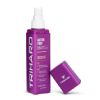



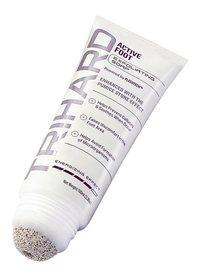










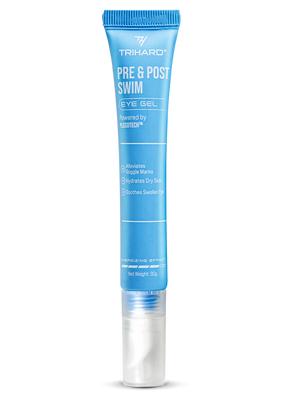





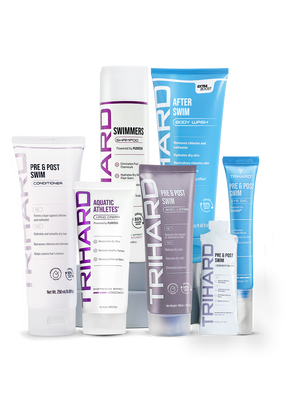







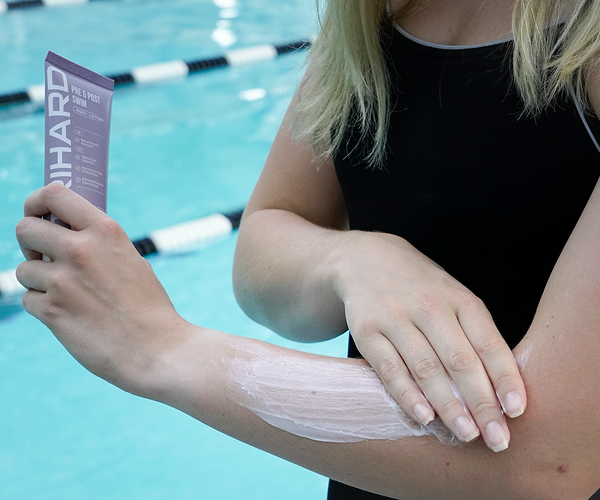

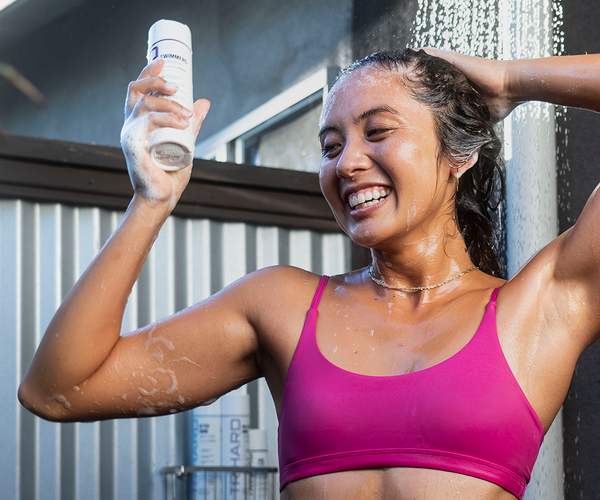
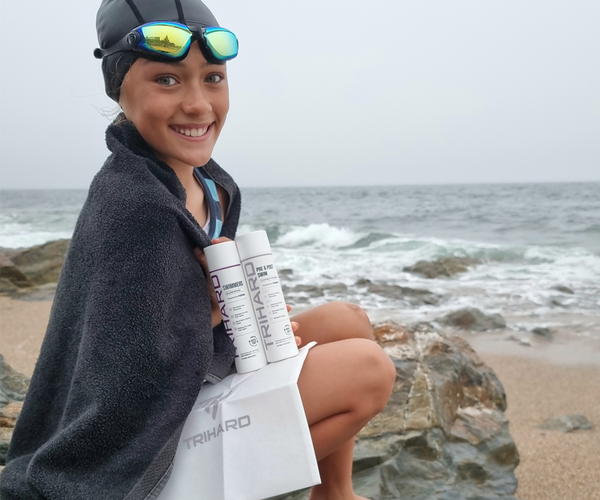
Laissez un commentaire